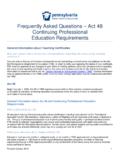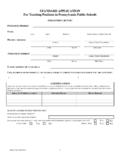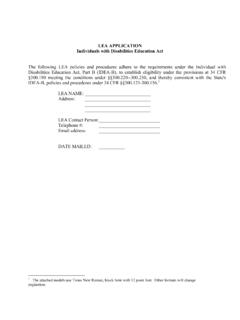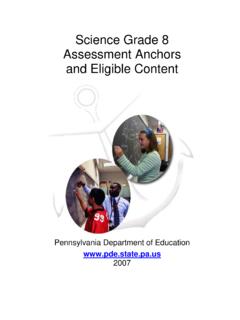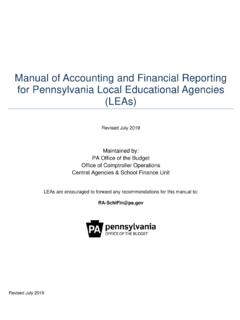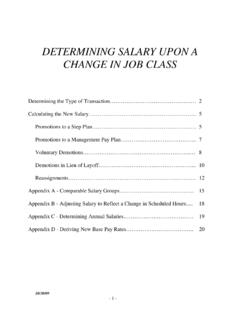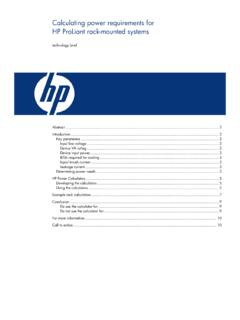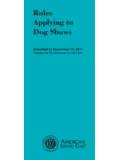Transcription of SAMPLE SYLLABUS
1 SAMPLE SYLLABUS COURSE TITLE: ELECTROCARDIOGRAPH TECHNIQUE & APPLICATION PREREQUISITE: AHC101 Introduction to Health Careers; BI0101 Anatomy & Physiology 1 INSTRUCTOR: TBA COURSE SCHEDULE: Classes are scheduled between 8:00 AM and 10:00 PM, weekdays (dependent upon day or evening sessions) COURSE LENGTH: 24 lecture hours / 24 lab hours / Quarter Credits COURSE OVERVIEW: Acquiring a deeper understanding of the cardiovascular system and how it functions, students practice basic electrocardiograph patient care techniques, applying legal and ethical responsibilities. Students learn the use of medical instrumentation, electrocardiogram theory, identification of and response to mechanical problems, recognition of cardiac rhythm and response to emergency findings. COURSE OBJECTIVES: Upon successful completion of this course, the student will be able to: 1. Define the key terms associated with electrocardiographs. 2. Describe the cardiac cycle and the conduction systems that controls the cardiac cycle.
2 3. Describe the electrocardiogram. 4. Maintain equipment for safety and accuracy; identify and eliminate or report interference and mechanical problems. 5. Identify the basic equipment and supplies required for electrocardiography. 6. Demonstrate proper lead placement. 7. Describe and demonstrate the step-by-step procedure for obtaining an EKG and use documentation skills to identify electrocardiographs. 8. Calculate rate and identify rhythms. 9. Recognize a cardiac emergency as seen on the EKG. MEDIA, TEXT & RESOURCE REQUIREMENTS: Cohn, E. & Gilroy-Doohan, M. (2002): Flip and See ECG, 2nd Edition Saunders Elsevier Publishing. Young, A., et al. (2006): Kinn s The Medical Assistant, an Applied Learning Approach, 9th edition. Text & Workbook: Saunders (Elsevier) Publishing. INSTRUCTIONAL STRATEGIES: This course combines lecture instructions with lab application. Instructional strategies include lecture, demonstration, discussion, practical application, simulation and presentations.
3 COURSE OUTLINE* 1. Review Anatomy and Physiology of Cardiovascular system; cardiac cycle, conduction pathways; role of the ECG Aide; purpose of Electrocardiograms. 2. Terminology, equipment and supplies required for ECG. 3. ECG Instrumentation; lead placement and vectors. PCT103 Electrocardiograph Technique & Application 48 Total Hours Quarter Credits 24 Lecture Hours 24 Laboratory Hours 4. Normal ECGs, calculating rate, introduction to rhythms. 5. Patient preparation for ECG tests; finding the heartbeat, taking an ECG 6. Naming rhythms, types of rhythms, clues to identifying rhythms. 7. 25 common dysrhythmias 8. Charting ECGs 9. Reading ECGs 10. Recognizing interference, loose leads and other malfunctions 11. Recognizing, responding to, reporting emergency situations 12. Review & Final Exam. * Session Course Outline may change as needed, and shall be determined by the instructor. Content shall not change, and if so, students shall be given prior notice. However, depending on the term, the course breakout in sessions per week may vary, but all contact hours shall be met within the term, and within the class schedule parameters.
4 Make-up sessions may be scheduled during hours other than the regularly-scheduled meeting times, including breaks and weekends. GRADING REQUIREMENTS: Final grades will be determined as follows: GRADE BREAKDOWN GRADE SCALE Quizzes 20% 100-90 A Tests 25% 89-80 B Lab Assignments 30% 79-70 C Final Exam 25% 69 & Below F 100% ATTENDANCE REQUIREMENTS: It is important for the school to be notified when a student is not able to attend class. It is the student s responsibility to inquire about make-up work for both classroom lectures and laboratory sessions. Tardiness and/or absence from any part of a class/lab will constitute a partial absence. A total of three partial absences will constitute a full absence. For further information on the attendance policy, consult the current edition of the MedVance Institute catalog and applicable student handbook. MAKE-UP WORK: It is the student s responsibility to inquire about make-up work for both classroom and laboratory sessions.
5 The instructor will not re-teach material, therefore there is no charge for make-up work. For information regarding make-up work, please consult the current edition of the catalog and applicable student handbook. INSTRUCTOR RESPONSIBILITIES: 1. At the beginning of each course, the instructor will provide a course SYLLABUS to each student in the class. 2. The instructor will evaluate each student s participation, assignments, assessments and projects based on the grading criteria published in the SYLLABUS . 3. Accurate records of each student s attendance and grades will be maintained by the instructor, and retained at the campus. Attendance will be reported at the conclusion of each class meetings; course grade averages will be reported at the mid-term and final weeks, as a minimum. 4. Unannounced quizzes and special projects may be given at the instructor s discretion. STUDENT: TEACHER RATIO For information on maximum class capacity and student to teacher ratio for lecture and laboratory courses, please consult the current edition of the catalog.
6 PCT103 Electrocardiograph Technique & Application 48 Total Hours Quarter Credits 24 Lecture Hours 24 Laboratory Hours Schedule: 48 hours presented 8 hours per week x 6 weeks. Texts: Cohn, E. & Gilroy-Doohan, M. (2002): Flip and See ECG, 2nd Edition Saunders Elsevier Publishing. Young, A., et al. (2006): Kinn s The Medical Assistant, an Applied Learning Approach, 9th edition. Text & Workbook: Saunders (Elsevier) Publishing. Week Hours Session Topic Resources Assignments Week 1 Hours: 1-8 Lecture 6 hours Lab 2 hours Introduction to course, materials, publication & review of SYLLABUS ; review Anatomy and Physiology of Cardiovascular system; cardiac cycle, conduction pathways; role of the ECG Aide, purpose of Electrocardiograms. Discuss terminology associated with ECGs, demonstrate equipment and supplies required for ECG; orientation of ECG exam room/lab. Text, lab instruction, lab equipt & supplies Assignments: Class notes, participation in lab activities; read Kinn s Chapter 46.
7 Week 2 Hours 9-16 Lecture 4 hours Lab 4 hours Explain ECG Instrumentation; demonstrate lead placement and discuss/explain vectors; practice lead placement. Explain & view normal ECGs; demonstrate calculating rate, introduce rhythms. Practice calculating rate. Text, lab instruction, lab equipt & supplies Assessments: vocabulary quiz/test Assignments: Class notes, participation in lab activities; read Cohn s assigned chapters. Week 3 Hours 17-24 Lecture 6 hours Lab 2 hours Describe patient preparation for ECG tests; finding the heartbeat, taking an ECG. Practice ECGs. Naming rhythms, types of rhythms; clues to identifying rhythms. Text, lab instruction, lab equipt & supplies Assignments: Class notes, participation in lab activities; read Cohn s assigned chapters. Week 4 Hours 25-32 Lecture 1 hour Lab 3 hours Describe 25 common dysrhythmias; practice ECGs. Explain and demonstrate charting ECGs; practice ECGs. Text, lab instruction, lab equipt & supplies Assessments: rhythms quiz Assignments: Class notes, participation in lab; read Cohn s assigned chapters.
8 Week 5 Hours 33-40 Lecture 3 hour Lab 5 hours Practice reading ECGs. Recognizing interference, loose leads and other malfunctions; simulate identification of and correction of malfunctions & interference. Text, lab instruction, lab equipt & supplies Assignments: Class notes, participation in lab activities; review Kinn s pp 947-948. Week 6 Hours 41-48 Lecture 1 hour Lab 3 hours Recognizing; responding to emergency situations; simulate emergency response. Review of ECG technique, rhythms, rates, charting, lead placement, patient preparation & education. Final Exam & skills competence testing. Text, lab instruction, lab equipment & supplies Assessments: interference quiz Assignments: Class notes, participation in lab activities; review Cohn s (all chapters) and Kinn s chapter 46 to prepare for final exam.
